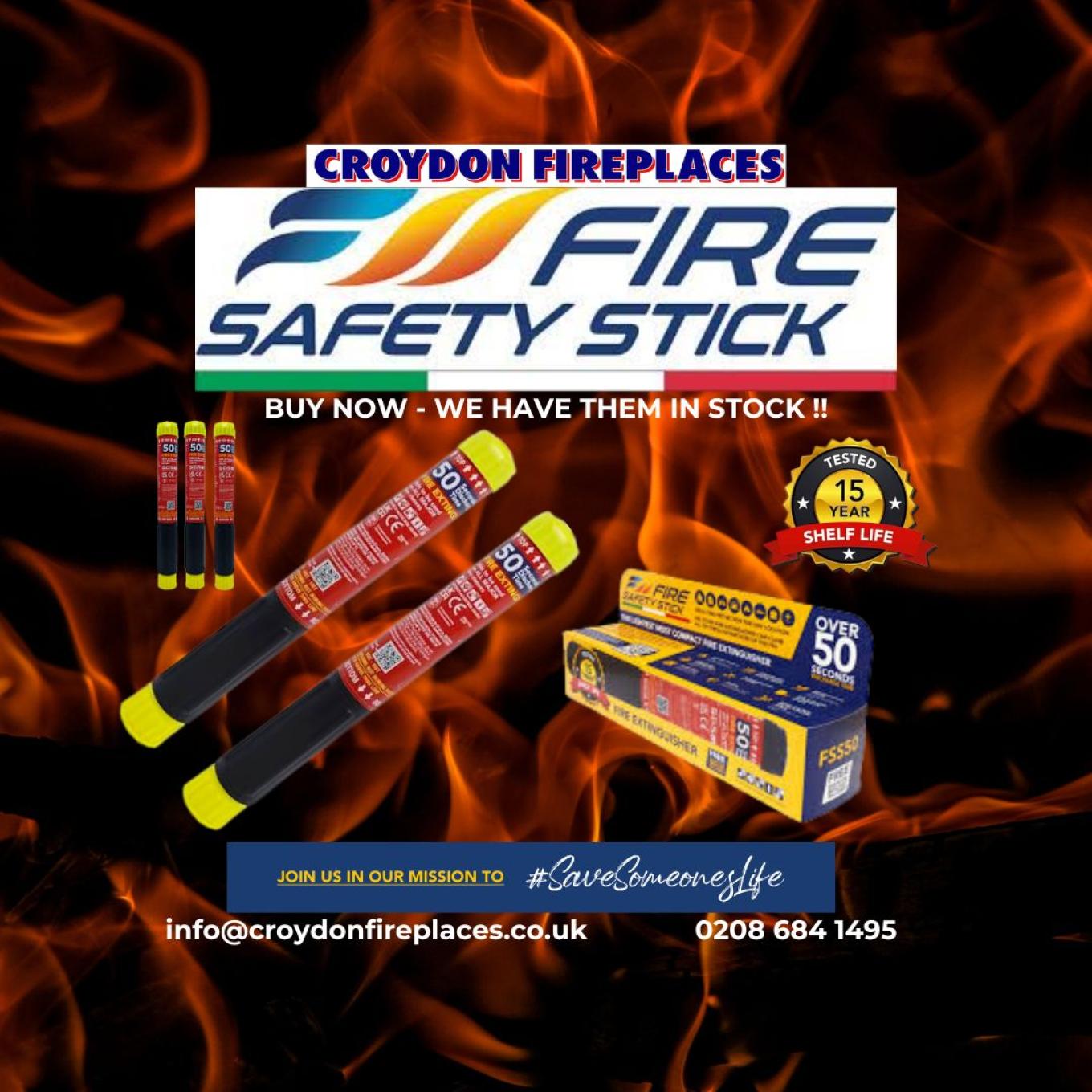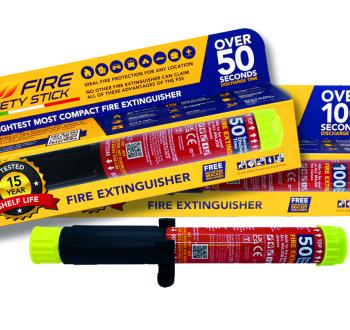How does the Fire Safety Stick work?
The Fire Safety Stick (FSS) is a manual, portable fire extinguishing device. It uses a Potassium ion jet (a unique method among conventional fire extinguishers) that works by interrupting a fire’s chain of reaction (the “auto-catalyst” of the fire).
Fire Safety Stick is composed of stable, solid minerals; it does not contain gas and is not pressurised. The aerosol-like jet is only produced when the charger is struck with its base. The produced aerosol jet is free of thrust and is essentially an inert salt that emits gas already present in the atmosphere.
The 50-second (minimum discharge) model of the Fire Safety Stick!
Certified for 5 fire classifications, A – Flammable solids, B – Flammable liquids, C – Flammable gases, Electrical up to 100,000v, and F – Cooking oils and fats! 15-year shelf life minimum! Weighs 215 grams! No professional servicing is needed! No Damaging mess after use! Safe to breathe in! Easily recyclable! No harm to the environment!
Standard Stick £50.00 + VAT
Unique Clip Designed Holder £12.50 + VAT
Standard Delivery of the above; £7.50 + VAT
How to use;
Step 1: Call 999 (Emergency Services)
Immediately call 999 the emergency services after noticing a chimney fire! This product is NOT a replacement for the fire department!
Always seek help by calling the emergency number and make sure to warn others for your own safety and do not put yourself in danger.
Step 2: Activate the Fire Saftey Stick and place
Make sure to read the instructions carefully and well in advance of an actual situation where you have to use Fire Saftey Stick.
After activating ChimFireStop, place the saftey stick next to the fire or within the appliance and close the doors.
Step 3: Extinguishing starts immediately after activation.
Here’s the chemistry behind it…..
This process allows the stick to extinguish all types of fires through saturation, while its slow bio-degradation in the environment, further prevents the likelihood of subsequent fires.
The extinguishing process involves two different reactions: one is physical and the other, chemical. The physical reaction relates to potassium ions (or Free Radicals) tendency to oxidise rapidly in air. When in contact with air, alkaline salts consume great quantities of oxygen, thus depriving fires of oxygen. Then the chemical reaction is created through the stable link between potassium particles and the fire’s combustion particles.
Through the two reactions, a quick oxidation process takes place, immediately transforming the jet from a solid state into a gaseous state freeing the potassium particles. These atoms are able to intercept and interrupt any other free particles produced by the fire’s natural chain reaction combustion process.
Potassium has strong inhibitor qualities due to its weak ionization energies. The extinguishing agent being used is composed of Potassium Nitrate, organic oxidizer, and plasticizer resin.
When the Potassium Nitrate (KNO3) reacts (inside the body of the extinguisher) it breaks down and the aerosol that is formed is made up primarily of free radicals of Potassium K+, of Nitrogen N (an inert gas).
The aerosol that comes out of the unit reacts with the fire. Potassium radicals (K+) capture the Oxygen of the combustion thereby extinguishing it.
At the end of the extinguishing process the following is discharged to the atmosphere:
As a solid: particles of Potassium (that have reacted with the Oxygen of the fire) having a size between 3-4 microns. These particles are invisible at sight and heavier than air. They disperse in the atmosphere and tend to deposit on the ground in no appreciable amounts.
As a gas: As Nitrogen; an inert gas already present in the air we breathe at more or less 78%.
As water vapour (and lastly) extremely minimal toxic by-products that are a result of the combustion process. (This amount is so slight, it does not conductive to electricity.



